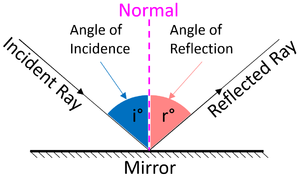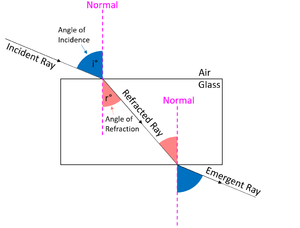Difference between revisions of "Incident Ray"
| Line 29: | Line 29: | ||
:[https://www.amazon.co.uk/gp/product/0008158770/ref=as_li_tl?ie=UTF8&camp=1634&creative=6738&creativeASIN=0008158770&linkCode=as2&tag=nrjc-21&linkId=ec31595e720e1529e49876c3866fff6e ''Incident ray, pages 202, 205, GCSE Physics; Student Book, Collins, AQA ''] | :[https://www.amazon.co.uk/gp/product/0008158770/ref=as_li_tl?ie=UTF8&camp=1634&creative=6738&creativeASIN=0008158770&linkCode=as2&tag=nrjc-21&linkId=ec31595e720e1529e49876c3866fff6e ''Incident ray, pages 202, 205, GCSE Physics; Student Book, Collins, AQA ''] | ||
| + | |||
| + | ====Edexcel==== | ||
| + | |||
| + | :[https://www.amazon.co.uk/gp/product/1292120223/ref=as_li_tl?ie=UTF8&camp=1634&creative=6738&creativeASIN=1292120223&linkCode=as2&tag=nrjc-21&linkId=068ecf40278c32406a7f1c6e66751417 ''Incident ray, page 66, GCSE Physics, Pearson Edexcel ''] | ||
Latest revision as of 15:32, 21 November 2019
Contents
Key Stage 3
Meaning
The incident ray is the name given to a light ray before it reaches the boundary between two media.
Examples
| The incident ray is labelled in both of these diagrams. | |
Key Stage 4
Meaning
The incident ray is the name given to a light ray before it reaches the boundary between two media.
Examples
| The incident ray is labelled in both of these diagrams. | |

